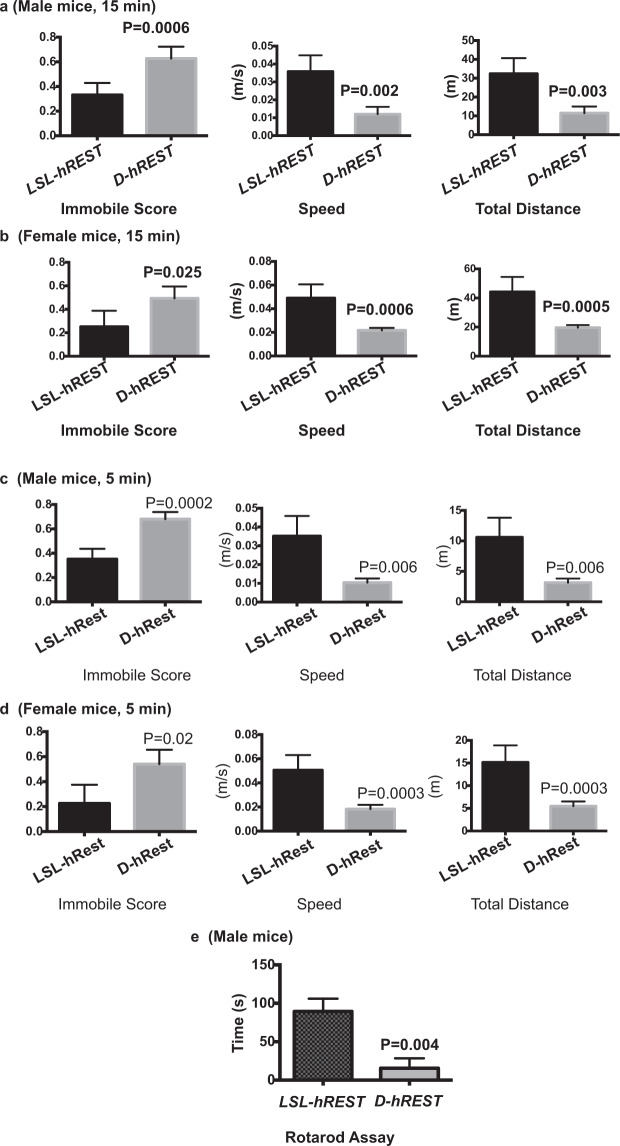Figure 7.
REST-DRD2 pathway regulates spontaneous locomotion in D-hREST mice. (a) D-hREST male mice showed significantly decreased spontaneous locomoter activity, as determined by open field assay performed for 15 min. Open-field data were calculated in terms of immobile score, speed, and total distance. P values are shown in the figure. N for D-hREST mice = 5; N for LSL-hREST mice = 5. (b) D-hREST female mice also showed significantly decreased spontaneous locomoter activity, as determined by open field assay performed for 15 min. P values are shown in the figure. N for D-hREST mice = 3; N for LSL-hREST mice = 7. (c,d) Both D-hREST male (c) and female (d) mice showed significantly decreased spontaneous locomoter activity when assayed for 5 min. The experiments were performed using the open field assay and the data were calculated in terms of immobile score, speed, and total distance. P values are shown in the figure. N for D-hREST male mice = 5; N for LSL-hREST male mice = 5. N for D-hREST female mice = 3; N for LSL-hREST female mice = 7. (e) Motor coordination test using the rotarod assay in male mice. N for each group = 8. P values are shown in the figure.

